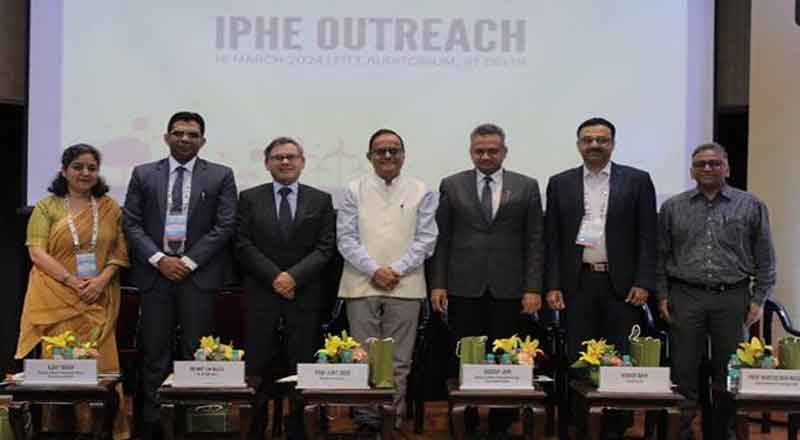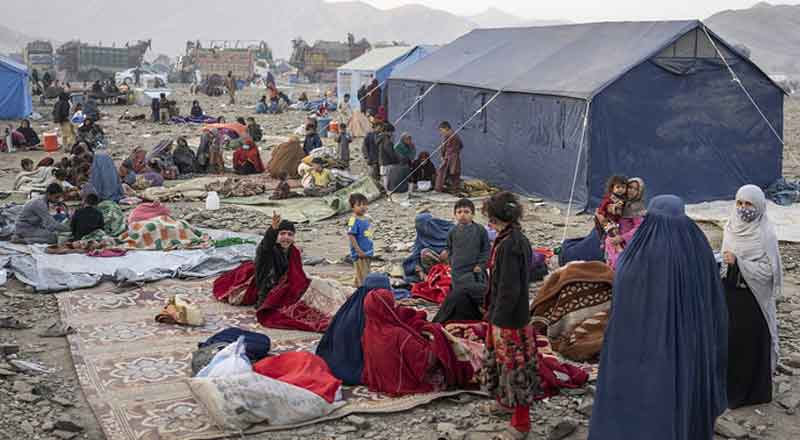The Foundation also takes up several programs and activities that help in honing employability skills of people from rural areas
SRF with a turnover of $725 million (Rs. 4,500 crore) is a multi-business entity engaged in the manufacture of chemical based industrial intermediates. Its business portfolio covers Technical Textiles, Flurochemicals, Speciality Chemicals, Packaging Films and Engineering Plastics. As a manufacturer of wide range of products that make people’s daily lives safer and more comfortable, SRF claims to touch everyone’s life every day in more ways than one.
With headquarters in Gurgaon, India, the 6500-strong global workforce company has operations in two other countries, Thailand and South Africa. The company is equipped with state-of-the-art R&D facilities, for process innovations and product development and adopts TQM as a management way.
The company through its social wing, SRF Foundation remains committed to continue to contribute towards the cause of education, vocational skills, health, natural resource management and affirmative actions.
Education – A critical aspect of SRF Foundation
With the belief that it is Quality Education and Employable Skills only which will enable the future generation of India to rise from slumber of poverty and reach heights of socio-economic development it aims to achieve, SRF Foundation primarily engages in the field of education and skill building.
SRF Foundation focuses on holistic educational transformation in 100 schools directly and 315 schools indirectly spanning six states and 415 villages under the Rural Education Program. Emphasis is given on the physical as well as intangible behavioural change through different programs, interventions and workshops from time to time as per the gaps and needs that are identified. Programs, workshops and meetings are held to impact and synergise students, teachers, headmasters, SMC and the community who come together and contribute to the holistic educational transformation.
Efforts are made to provide necessities in order to keep the children in school campus. Extensive mobilization through village facilitators ensures children attending schools regularly. In order to keep students in schools, quality and facilities have been taken care through various programs for different gaps. ‘Udaan’ – a special program for girls has been launched to address drop-out rate and illiteracy among girls, while TTS-MS has been going for promotion of science among students. For computer literacy to expose students with information technology, KidSmart was launched and with SMS access to drinking water, toilets, library, playing area and sports equipment was provided.
Leadership among Headmasters has been achieved through workshops and among students leadership skills have come to fore through Bal Sabhas and Swachh Vidyalaya Program. Students under REP shared experiences and exchanges ideas during the School Twinning Program which focussed on bridging the gap between the two.
Therefore, through the programs students have been the beneficiary while the quality of education provided and the facilities have helped in their development.
1.1 Key Features of SRF’s Educational Programs –
• Working with formal system: SRF Foundation works hand in hand with the Government, SMC, and Community where gaps are abridged in the present system and we work as allies with different agencies to ensure quality education.
• Holistic education transformation: All the aspects that contribute to holistic educational transformation are considered where any factor, be it physical or intangible is acknowledged and is dealt accordingly by including all the stakeholders.
• Collaborative model: While SRF chips in with its expertise in education and academia, it welcomes and collaborates with different partners where their expertise is capitalised and adds value to the transformation process in different schools under MREP. SRF’s partners include – Coca-Cola-NDTV, Tetra Pak, UN Habitat, Enrich Agro, Schneider India, Times of India, CARE India and IBM.
• Resource leverage: Optimum utilisation of available resources is done to ensure ownership, responsibility and accountability among the various stakeholders. Local resources are leveraged to ensure long term functioning and sustainability of the various plans and programs.
• TDC (Thinking Doing Communicating): Projects are planned and well thought after considering the ground realities and the community. It is then implemented strategically as planned. The communication part takes care of communicating through newsletters, journals, websites and social media.
• Solutions (sustainable and replicable model): Local community is encouraged to participate and involved in planning and decision making which makes them responsible and develop a sense of ownership among them.
1.2 Quantitative Results –
Since 2010, the work done by the Foundation has been reaching and impacting the lives of 100,000 students, 1,056 teachers across 415 schools and 5,000 students of vocational courses on daily basis in six states of India. The results have started to appear in the form of complete infrastructure transformation of schools with computer aided education, libraries, science and math laboratories, playgrounds and functional toilets. School leadership is becoming more active, SMCs are taking active participation in the school management, and community members are becoming more aware about the importance of education. The other impacts as targeted are, increased attendance in schools with some witnessing up to 90% attendance, and school enrolment jumped to 100% while school drop-out ratio fell to a meagre 5-6%. The girl enrolment and attendance has shown the most dramatic improvement with their attendance and enrolment has more than doubled. As for vocational courses more than 1,000 people have been trained in various skills and are now earning a decent livelihood.
1.3 Impact –
• On Community and Society: There have been significant changes which is apparent among the students as well as in schools and the community on a whole. Holistic transformation – not just in the books, but is apparent as one sets foot in the Rural Education Program (REP) Schools. The change is in terms of physical transformation as well as behavioural. The schools are now equipped with different facilities such as drinking water, access to clean toilets, library, science labs, sport equipment which has ensured that no child is out of school. The percentage of attendance has resulted in enhanced performances among students. Availability of sports equipment has made them confident and students are participating in District and State Level Sports Meet. Bal Sabhas – a student driven initiative where students discuss and resolve issues related to schools within themselves, has helped many students identify and develop confidence and leadership skills.
With the presence of Science Labs in school, students can understand the cause and effect of phenomenon which leads to better understanding and analytical thinking. The introduction of IBM KidSmart for computer education has exposed the students to Information Technology and has made them computer literate. Access to clean water and toilets has ensured health and hygiene of students. All this has contributed to the overall development of a child.
The village meetings and workshops have made the Headmasters, teachers, parents and SMC to actively participate and address issues pertaining to school.
• On SRF Foundation: SRF Foundation articulates its vision as – “Quality Education and Training that Inspires Children and Youth from all Sections of Society to achieve Individual Aspirations and build a Better Society for Tomorrow, through the Knowledge, Skills and Values acquired”.
Therefore to minimise the atrocities of illiteracy, poverty and discrimination in this world and in furtherance with the legacy of Sir Shri Ram and Dr. Bharat Ram, SRF Foundation contributes majorly through holistic education transformation for making lives better and the world a better place. While striving for such impact, it accomplishes the vision and mission of the Foundation which is a driving force and keeps the Foundation going through the rough and the smooth terrains it encounters.
• The System: With the kind of efforts made from different quarters, Headmasters and Teachers have been going that extra mile and are ensuring that the plans and programs implemented are smoothly running. There have been examples where HM’s and Teachers have gone out of the way and invested personal resources to improve and make things better.
In order to communicate efficiently and to fill the communication gap, WhatsApp and Facebook is used by almost all the stakeholders and serves as a platform for sharing the progress. This helps in keeping everyone on the same page, meanwhile they are supported and encouraged during the process.
To conclude –
The kind of transformation that is felt once we go to the community and compare the first time we set our anchor there and now is perplexing. The change is substantial and is widely acknowledged by whosoever is concerned or related to the community.
REP and other Programs of SRF Foundation have set milestones in education transformation and have become examples for other states as well. Programs are not limited to Haryana, but have also made an impact in 5 other states namely- Tamil Nadu, Uttarakhand, Rajasthan, Gujarat and Madhya Pradesh.
People from other states have come for exposure visits to Haryana for witnessing the model and replicating back to their respective states. Members of American Chamber of Commerce (AMCHAM) also came for an exposure visit.
Whatever has been accomplished couldn’t have been achieved without the contribution and support of SRF’s partners. Its partners have time and again pitched in with their resources and expertise and have helped it achieve a lot in a short span. The Foundation puts it that – had it been a solo journey, it would not have been possible for it to get it accomplished and impact the way it has done along with the help of its partners.




